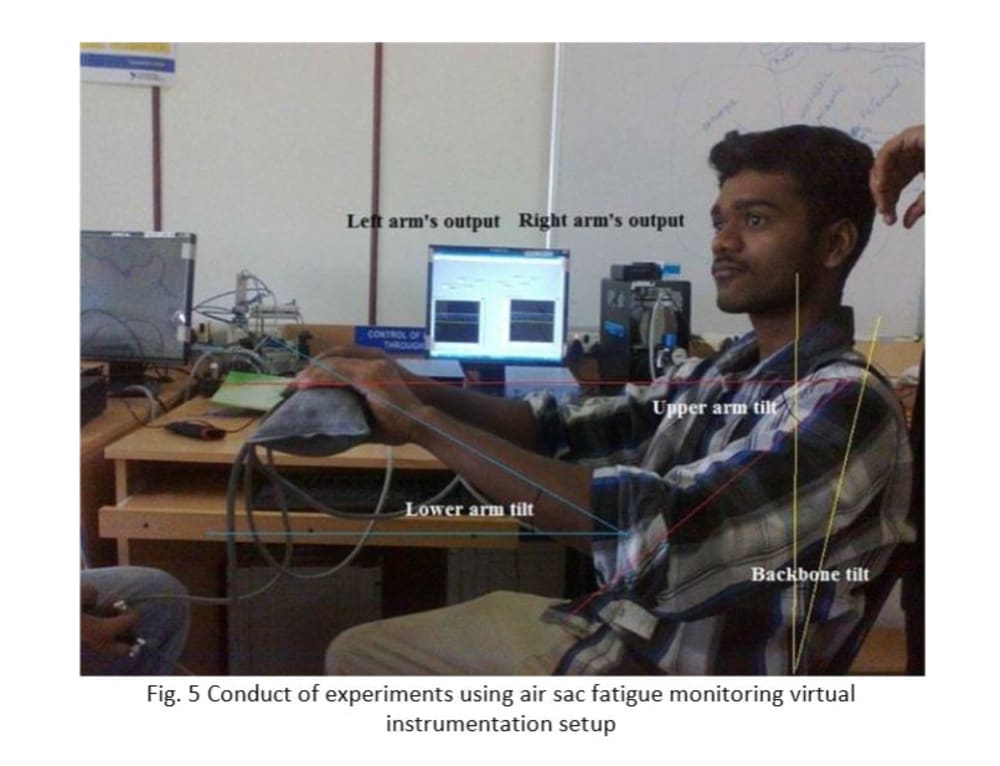This is research in which a setup was developed to determine the optimal values of ergonomic positional parameters that would mitigate the development of fatigue while performing massage therapy. This setup was based on virtual instrumentation principles and consisted of a sphygmomanometer bulb, an air sac, a pressure sensor, a data acquisition card and a personal computer installed with the Laboratory Virtual Instrumentation Engineers Workbench software (LABView software). The air sac fitted in this setup is equalized with the muscles and other human body parts which a human therapist is required to press while performing massage therapy. After constructing the air sac fatigue monitoring virtual instrumentation setup, 25 participants who were not actually massage therapists were asked to press the air sac to mimic the behavior of the massage therapists during the time of their work.
After drawing necessary data by performing this activity and by entering the data in Minitab 16 software, regression models to specify optimal values of ergonomic positional parameters were developed. These regression models were practically validated by conducting experiments involving five other participants. The method of utilizing these regression models in determining the optimum values of positional parameters that would mitigate fatigue development while performing massage therapy is illustrated by presenting two cases.
While concluding, it is suggested to involve actual massage therapists for testing the performance of the fatigue monitoring virtual instrumentation setup developed during the research reported in the research. As the title implies, the research reported was carried out with the objective of providing solution to determine the optimized positional parameters of individual massage therapists for mitigating the development of fatigue while performing their jobs. It is reported that, in most parts of the world, massaging is carried out traditionally, without much involvement of the concept of ergonomics. So, it is evident that imparting the concept of ergonomics in this traditional field would prove very beneficial to the practitioners and patients. In the field of massage therapy, performance of the therapist is very crucial. It is important to note that the therapists develop fatigue while executing the job in uncomfortable positions. Even if the massage therapists have the capability to do the job efficiently, they will not be able to do it with full efficiency due to the fatigue that develops eventually in them. This fact implies that a therapeutic setup needs to be designed to determine the optimized ergonomic positions for mitigating the development of fatigue in the therapists while executing their jobs. However, there has been no ergonomic design for therapeutic setup because of which therapists face medical problems. In order to fill this gap, during the research being reported here, attempts were made to develop a therapeutic setup using virtual instrumentation devices. The details are presented in the research.
Like this entry?
-
About the Entrant
- Name:Suryanarayanan Murali
- Type of entry:individual
- Software used for this entry:LABView 8.0 and Minitab 16
- Patent status:none








